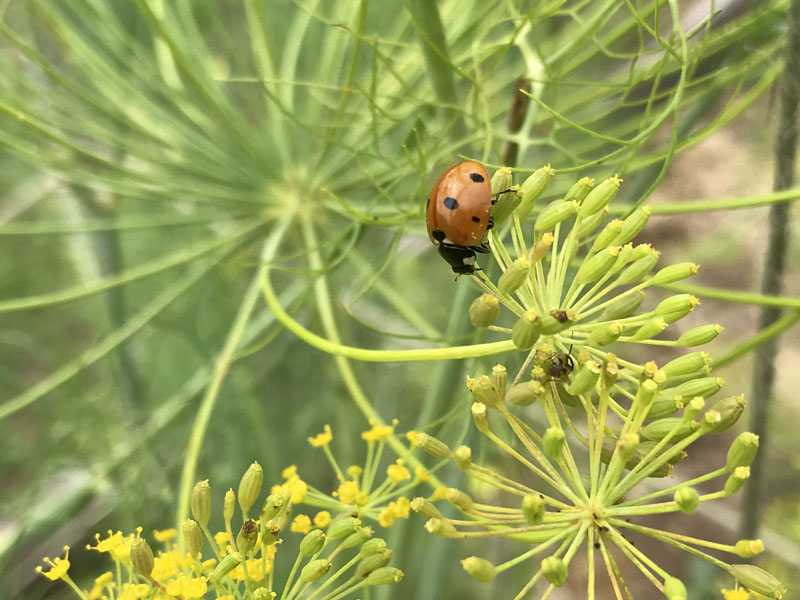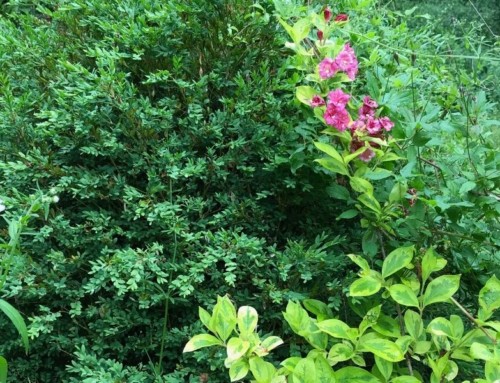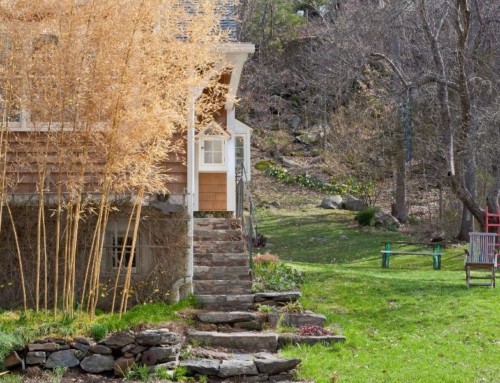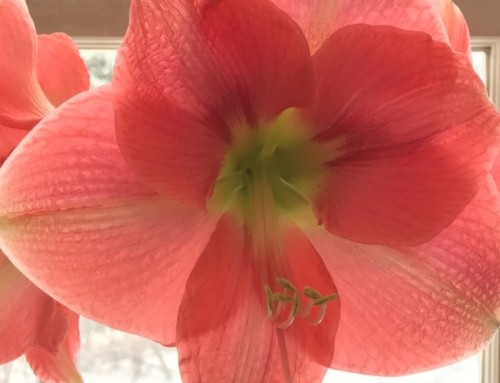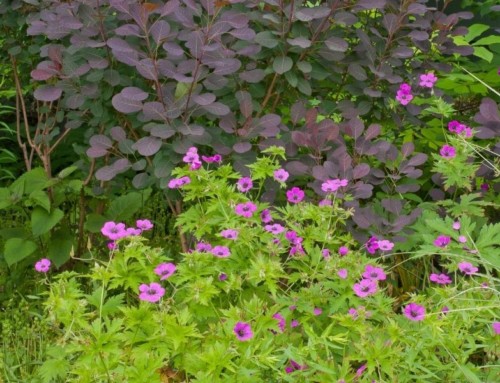Drawn in by a hummingbird moth sipping nectar in a patch of bee balm (Monarda didyma ‘Raspberry Wine’) in my garden, I stood close and still to watch.
Then I noticed a little green spider riding a thread of silk from stem to stem. And dozens of tiny wasps and bees crawling inside tubular flowers and buzzing about.
And bumblebees. Their long tongues must have not reached far enough to get at all the nectar. They pushed and smooshed flower trumpets into crumpled accordions, shortening the distance to goodies inside.
A ruby-throated hummingbird worked its way over close enough for me to feel the downdraft from its wings on my arm. I often can’t see hummingbirds from the house, but when I see monarda stalks moving as if by wind on a still day, I know they’re there.
Monarda didyma ‘Raspberry Wine’ is just the color its name suggests. I love it. Blooming for at least 6 weeks, it rarely suffers powdery mildew, hosts a world of insects and produces enough nectar to fuel hungry hummingbirds.
When it runs too far, I dig out and transplant encroachers to slug it out in less tended areas. This can be done as they emerge in spring or in fall after cutting back post-bloom.
I received an email from a client in Stamford, CT.
“The Mountain Mint we planted is the preferred destination for at least 6 different species of bees, hornets, wasps, etc.. It’s like Grand Central Station all day long. I’m assuming these are all “good” to have?
Yes they are – bees, wasps, butterflies, syrphid flies, beetles and more, all beneficial in some way. Some are pollinators, others do pest patrol by eating aphids and other garden pests, or by laying eggs that hatch into larvae that consume the helpless host.
Mountain mint (Pycnanthemum muticum) is another favorite pollinator plant.
It blooms for a long time, is vigorous enough to make big patches but easy to pull where not wanted and attracts all manner of beneficial insects. Sometimes there are so many bees buzzing, it sounds like an airplane lazily cruising through the summer sky.
The other long-time tried-and-true pollinator plant massed in my late summer garden is brown-eyed Susans (Rudbeckia triloba). It self-sows prolifically and I pull it out where I don’t want it. When I slack off editing, the whole back garden is engulfed in gold.
Most composites – daisy-like flowers such as coneflowers, black-eyed Susans, sunflowers – are good pollinator plants. Their central cones, surrounded by landing-pad petals, are like targets, easily seen from a distance. They’re packed with with nectar and pollen-producing florets.
This year, thanks to the doe and her well-nourished twin fawns that have taken up residence here, I will have really staggered brown-eyed Susan blooms. Some are blooming now, and will continue for 6-8 weeks.
The munched plants, now doused with deer repellant, will take a couple weeks to recover before they kick into gear, well-branched.
I’m loving the nodding onions (Allium cernuum), a prairie native perennial with grassy leaves and rounded downward-nodding white to pink umbels – and so are native bees. All parts of the plant are edible, but I’d rather let them set seed and proliferate than eat them.
And in the vegetable garden, umbel-shaped flowers of non-native dill, parsley, fennel and Queen Anne’s lace attract all manner of beneficial insects and are larval food plants for several butterfly species.
Planting for pollinators means planting a lot of flowers. Big plantings are easier for pollinators to locate. Many pollinators feed on one species at a time, so planting a lot of food in one place conserves energy otherwise spent foraging.
The goal is to always have at least three things (preferably natives) in bloom at all times.
NATIVE PLANTS FOR LATE SUMMER POLLINATORS
Be on the lookout for times when not enough is blooming. Plant these late summer native perennials and shrubs to fill the gap.
- Joe Pye Weed (Eutrochium , formerly Eupatorium)
- American spikenard (Aralia racemosa)
- Black cohosh (Actaea, formerly Cimicifuga racemosa)
- Cardinal flower (Lobelia cardinalis)
- Blazing star (Liatris )
- Purple coneflower (Echinacea purpurea)
- Woodland sunflower (Helianthus divaricatus)
- Buttonbush (Cephalanthus occidentalis)
- Rosy meadowsweet (Spiraea tomentosa)
- White meadowsweet (Spiraea alba)
- Summersweet (Clethera alnifolia)
